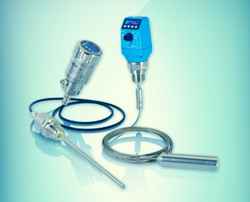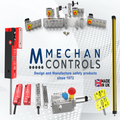
Posted to News on 23rd Mar 2015, 17:42
Customer demand drives SICK fluid level probe expansion
Customer demand to use SICK's LFP fluid probes in difficult applications has led to an expanded range of products, all offering the same highly accurate level detection and measurement in oil- and water-based fluids even in the presence of foam.

LFP's guided wave radar technology means its measuring performance is unaffected by the density or conductivity of the fluid, making it consistently accurate even for deposit-forming and foaming liquids. Its cost effectiveness and versatility have led to it finding new uses in factory automation, machine tool and machine building applications because it is universally adaptable and quick to commission.
Darren Pratt, Sick UK's Industrial Instrumentation specialist, says: "Whenever we have shown customers the benefits of the LFP, they have eagerly adopted it and then challenged us with new problems and applications. Through feedback from customers trying to solve real problems on the ground, our product development team has innovated and adapted the LFP on many occasions, for example for challenging tank shapes, materials or locations; where very hot fluids create challenges for the electronic components or for use with fluids having a very low dielectric constant or even highly corrosive fluids."
As many level measuring applications have level ranges of up to 4m, either in large tanks or slim deep ones, the LFP's probe length has been extended to provide hygienic level measuring options up to 4m with the LFP Inox.
Installations with limited headroom above the tank, which do not have such stringent hygiene requirements, can now be solved using the LFP cubic rope version. A weighted stainless steel rope up to 4m long is used instead of a solid probe to guide the microwave pulse. This flexible rope makes installation and handling very straightforward.
The LFP Remote amplifier versions provide an option for higher process temperatures, up to 180degC or where the separation of probe and electronics provides easier access to the device for set up and diagnostics. So, the LFP Remote's in-tank probe is connected remotely to the sensor and emitter via a flexible coaxial cable up to 3.3m long.
Autoclaving facilitated
In addition to enabling use in higher temperatures and providing localised access to the display, the separation of probe and amplifier also facilitates autoclaving, a process where the whole tank is removed for deep sterilisation. The probe can be left fitted to the tank for this process as the BNC connection on the probe is completely sealed even without a mating connector fitted.
The Co-ax tube accessory was introduced for applications where the liquids measured have a low di-electric (e.g. oils) and for use in tanks which are open topped, have non-metallic walls or metallic protrusions inside the tank that could disrupt the sensing of the reflected radar pulse. A stainless steel, perforated sleeve over the probe facilitates measurement of the liquid level within it.
The LFP Cubic Titanium which features titanium wetted parts, was developed to provide accurate level readings in applications where stainless steel parts would be rapidly corroded or dissolved by chemical and/or galvanic reaction, such as in metal plating or with hot, concentrated acid solutions.
A patented "foam algorithm' has also been implemented into all LFP models. Foam is traditionally a challenge for almost all level measurement technologies. The innovative algorithm employed in the SICK LFP probes enables the probe to see through large amounts of foam and detect the true fluid level.
Launched 3 years ago, the LFP range has quickly been adopted as an economic fluid level probe. The LFP Cubic's rugged ABS housing is suited to a wide range of process conditions with temperatures from -20degC to +100degC and pressures from -1 to 10bar. The sensor's tough enclosure is rated IP67 and its robust design offers a long service life with minimal wear and maintenance.
The LFP Inox is designed for hygienic processes with interchangeable hygienic process connections, a process temperature range up to +150degC (+180degC in the remote amplifier version), and offers protection to IP69K with resistance to chemical cleaning and washdown.
All LFP models feature a stainless steel probe or rope which can be cut to length to suit the installation conditions. The range expansion enables the probe to be used in large vessels; however, with a deadband of just 25mm, the LFP is just at home in small vessels. Also, the probe can be bent to facilitate insertion from a horizontal mounting position, where this is possible and necessary.
LFP commissioning is made easier by the sensor's ability to simulate levels even when no fluid is present, enabling a "dry test' of the control system function, and the sensor's easy-to-read display and switching gives real-time level and status information. The analogue output is flexible, using either 4-20mA or 0-10V selectable, with up to four configurable PNP/NPN outputs. Connection to fieldbus networks is straightforward via an optional module.
For more information on the LFP family of fluid probes, or any of Sick's industrial instrumentation products, please visit www.sick.co.uk.
Want the latest machine building news straight to your inbox? Become a MachineBuilding member for free today >>

















